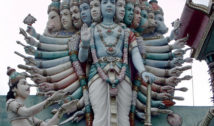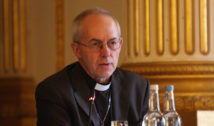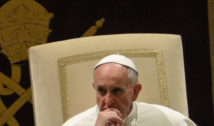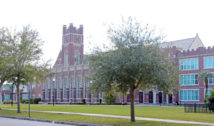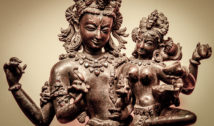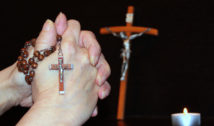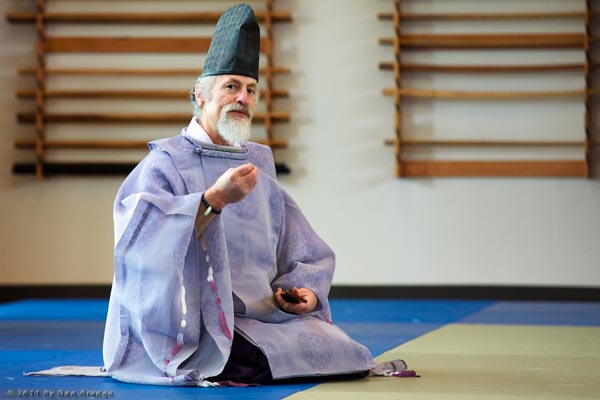
First Non-Japanese Shinto Priest Rev. Koichi Barrish Discusses his Faith
- By WRN Editorial Staff --
- 05 Jun 2015 --

In this interview with Susan Barber, Rev. Koichi Barrish discusses being the first non-Japanese Shinto priest and many beliefs of the Shinto faith.
Reverend Koichi Barrish, famous for being the first non-Japanese Shinto priest and priest of the Tsubaki Grand Shrine of America, sat down with Susan Barber of the Spirit of Ma’at to discuss the Shinto faith and his milestone in the religion’s history. Through the interview, Koichi Barrish and Barber discuss the Shinto gods, shrines, and the importance of “purification.”
This interview originally appeared in The Spirit of Ma’at. It’s presented as part of our #InTheirOwnWords series.
Susan: Reverend Barrish, I noticed at your website that you are the first American Shinto priest. How did that happen?
“I’m the first Shinto priest who is not Japanese.” Rev. Barrish: Actually, in two thousand years of Shinto history, I’m the first Shinto priest who is not Japanese.
For about thirty-five years, I was a teacher of Aiki-Do, which is a kind of manifestation of Shinto thinking. I was drawn to the Shinto part of it from the very beginning, and became involved in modern Shinto meditation and practices.
Eventually, I became interested in traditional Shinto, and received teaching from the Rev. Dr. Yamamoto Yukitaka, who was the 96th generation of his family to serve as the high priest of Japan’s oldest shrine, and was the highest-ranked Shinto priest in Japan.
“A big part of the meaning of Misogi is to be able to come into harmony with your life mission. Mine was to become a Shinto priest.”
In Shinto we have a concept called Misogi. A big part of the meaning of Misogi is to be able to come into harmony with your life mission. Mine was to become a Shinto priest.
Susan: Does Shinto perceive one God, or many?
Rev. Barrish: The Shinto word for the gods is Kami or Kamisama, and Shinto is basically the Way of the Gods — Kami-no-Michi. There are the heavenly Kamisama, earthly Kamisama, and the eight-million myriads of Kamisama.
We receive our life from heavenly Kamisama, from the Sun. The earthly Kamisama, called Sarutahiko-O-Kami, teach human beings how to live, providing guidance and protection.
Susan: How are we related to the gods?
“The qualities we seek to cultivate are sincerity, brightness, and uprightness.” Rev. Barrish: Human beings are the children of the Kamisama. We are the “divided spirit” of the Kamisama, we’re the same kind of stuff. When we leave this life, we go back.
It’s also possible to become Kamisama in this life. To achieve that, we would have to become vibrationally purified so that we could feel the breath, the heartbeat, and the thinking of a Kamisama. This involves Harae, or purification. The qualities we seek to cultivate are sincerity, brightness, and uprightness. Another main idea of Shinto is Kansha, or gratitude.
Susan: I understand that it is a Shinto practice to enshrine objects and places. What is the purpose of that?
Rev. Barrish: Everything is divine in nature. Everything is “children of Kami.” But there are areas of greater and lesser purification. Enshrining draws in a focus of particular qualitites.
In enshrinement ceremonies, objects are specially prepared to be like an antenna, sensitive to the vibration of a particular Kamisama. Enshrining them means performing ceremony that tunes them to that special channel.
For most people, the practice of Shinto revolves around visiting these shrines and participating in these kinds of ceremonies.
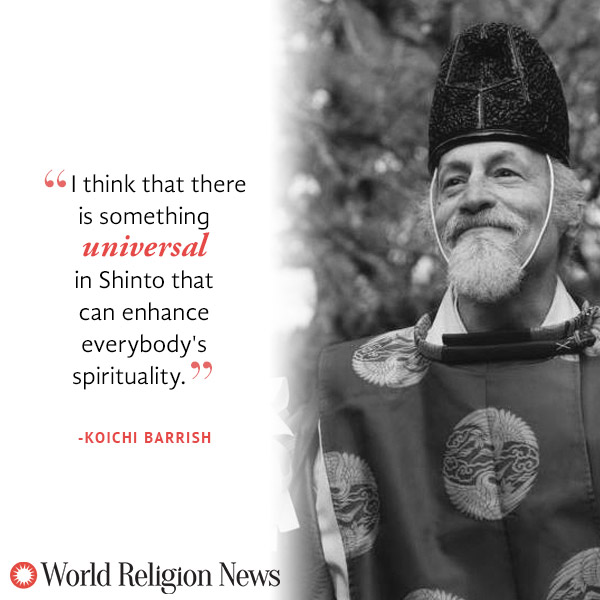
Susan: So Shinto is not “practiced” on a daily basis, then?
Rev. Barrish: There are those who do, but only a handful. Most people come to the shrines.
For example, last weekend I enshrined three deities, including the Deity of Divine Movement, Marriage, Meditation, and Joy. The small shrine and the symbols of the Kami had been purchased, and so I did the ceremony of purifying the place, activating those objects, and praying for everybody’s success and safety in their training.
Different people come at different times. This past Sunday, early in the morning, we did Misogi Shuho, or Purification in a Mountain Stream. There were people there who had traveled from Idaho as well as local shrine members. That ceremony was followed by the Chohai, the Great Purification Ritual, which is the morning worship.
Then there were people here for a wedding. We had a formal Shinto wedding. There was a ceremony of Baby’s First Shrine Visit — these ceremonies take place when a boy child is 32 days old or a girl child is 33 days old. After that, we did a Yakuyoke Kigan, a ceremony for someone who is entering a difficult year astrologically — it’s based upon age, not birth sign, a different kind of astrology.
Also, we had many people arrive from Anchorage Alaska who came for a special ceremony. And a family from nearby came for the ceremony of purifying a Kami-dana, or small shrine. Sometimes we do this in people’s homes, but in this case the family brought the shrine with them.
There also were some people who came from Canada for Hatsumode — the First Shrine Visit of the Year.
“The most important words in Shinto are O-Harahi-no-Kotova, and they mean purification.”
Susan: I keep hearing the word “purification.” Would you say that this concept is central to Shinto?
Rev. Barrish: Yes. The most important words in Shinto are O-Harahi-no-Kotova, and they mean purification. Born as children of Kami, we receive great vitality from Earth and inspiration from Heaven. But things happen that cause us to become preoccupied. Our mind gets spread out over time and space. We need to come into the present moment and return to ourselves. Then we will be able to communicate more fully with the Divine.
So the focus of Shinto purification is to remove the obstructions that block us from vitality and inspiration and divine communication.
There are many types of purification. In Jibun o Harai, one vibrationally purifies himself. Harae occurs when a person or group are purified by the Shinto priest. O Harahi is purification in which a Kami and human beings are connected in the Light of the Universe, purifying the past, present, and future.
Susan: Why do people visit Shinto shrines?
Rev. Barrish: People are drawn for various reasons.
Sometimes, just because it feels good. Or perhaps they feel a need for purification. You might come for a ceremony if you want to have a baby, or if you’re going to have one. Or if there is a special feeling you want to have.
Some people come just to meditate.
There are specific practices that people can learn to do on their own, but the majority come to have a ceremony done on their behalf. People get a profound feeling when they come.
Susan: Thank you so much for sharing this with us. Is there anything you’d like to say in closing?
Rev. Barrish: I think that there is something universal in Shinto that can enhance everybody’s spirituality.
If you get a chance, I hope you will visit our shrine.
This interview originally appeared in The Spirit of Ma’at. It’s presented as part of our #InTheirOwnWords series.

